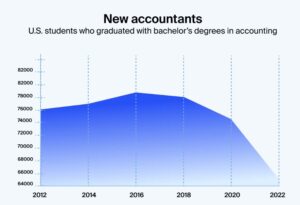Getting a business loan can feel like a maze, especially with all the paperwork involved. But what if it didn’t have to be so complicated? Using bank statements to secure a loan is a simpler, more flexible process that’s gaining traction. It’s about showing your financial reality without jumping through hoops. Let’s break it all down and see how this approach can open doors for your business.
Key Takeaways
- Bank statements offer a straightforward way to prove your financial health for a business loan.
- This method can save time compared to traditional document-heavy processes.
- Keeping your bank statements organized can make loan approvals smoother.
Why Bank Statements Are the Secret Sauce for Business Loans

Understanding the Role of Bank Statements in Loan Approval
Think of your bank statements as the VIP pass to your business’s financial backstage. Lenders use them to see how your money flows—what comes in, what goes out, and how steady it all is. Instead of relying on traditional income documents like tax returns or W-2s, bank statements give a raw, unfiltered look at your financial health. They’re like your business’s highlight reel, showing lenders you’ve got what it takes to handle a loan.
How Lenders Analyze Your Financial History
Lenders are like detectives, and your bank statements are their clues. They’ll check for consistent deposits (hello, steady income!), look for red flags like overdrafts, and calculate your net income. It’s not just about the numbers but also about the story they tell. Is your business growing? Are you managing expenses well? These details help lenders decide if you’re a safe bet.
Here’s what they might focus on:
- Cash flow: Are you bringing in more than you’re spending?
- Trends: Do your finances show growth or stability over time?
- Expenses: Are there any patterns that might raise eyebrows?
The Perks of Using Bank Statements Over Traditional Documents
Why go through the hassle of digging up tax returns or pay stubs when your bank statements can do the talking? Using bank statements:
- Saves time: No need to hunt down a mountain of paperwork.
- Shows real-time financial health: Lenders see what’s happening now, not what happened last year.
- Works for everyone: Especially helpful for small business owners or freelancers who might not have standard income documentation.
Bank statements don’t just simplify the process—they level the playing field. They’re your ticket to proving your worth, even if your income isn’t "traditional."
Making the Process Painless: Simplifying Business Loans with Bank Statements
What Documents You Really Need (Hint: It’s Not a Mountain)
Let’s get straight to the point—no one wants to drown in paperwork. The beauty of bank statement loans is that they keep things simple. Instead of scrambling to find tax returns, pay stubs, or a 50-page business plan, you’ll only need your last 12 to 24 months of bank statements. That’s it! Say goodbye to the paper chase and hello to a streamlined process.
Here’s what you’ll typically need:
- Personal and/or business bank statements for the past year or two.
- Proof of business registration, if applicable.
- A valid ID (because, hey, they need to know it’s really you).
No digging through old files or begging your accountant for last-minute help. Just pull up your online banking and you’re golden.
How Automation Can Save You Time and Sanity
Let’s be real—manually downloading and organizing bank statements is about as fun as watching paint dry. But here’s the kicker: automation tools can do the heavy lifting for you. Tools like StatementCloud or similar services can automatically fetch, organize, and even sort your bank statements.
Imagine this: instead of spending hours downloading PDFs, you set up an automated system, and voilà—your statements are ready whenever you need them. Plus, automation reduces errors and ensures you’re always prepared for tax season or a loan application. It’s like having a personal assistant, minus the coffee runs.
Pro Tip: Efficiently managing bank statement downloads not only simplifies loan applications but also keeps your financial records squeaky clean.
Tips for Keeping Your Bank Statements Loan-Ready
Keeping your bank statements in tip-top shape isn’t rocket science, but it does require a little effort. Here’s how to stay ahead of the game:
- Separate Business and Personal Accounts: Mixing the two is a recipe for chaos. Keep them separate to make life easier for you and your lender.
- Review Statements Regularly: Spotting errors or unauthorized charges early can save you headaches down the line.
- Organize Digitally: Use cloud storage to keep everything in one place. Bonus points if you name files clearly (e.g., "Jan_2025_Business_Statement").
By staying organized, you’ll not only impress your lender but also reduce stress when it’s time to apply for a loan. Trust me, future you will thank you for this.
From Application to Approval: Navigating Business Loans with Bank Statements
Breaking Down the Application Process Step-by-Step
Alright, let’s talk about how you can go from “I need a loan” to “Cha-ching, money in the bank!” without pulling your hair out. Here’s the play-by-play:
- Gather Your Docs: Start with your recent bank statements—most lenders ask for 12 to 24 months’ worth. Keep them clean and organized because, let’s face it, no one likes digging through a mess.
- Fill Out the Application: Most lenders offer online forms that are quick and painless. You’ll need to provide basic info about your business, like its name, address, and EIN. Oh, and don’t forget to double-check for typos—no one wants to be “John’s Pizaa Shop, Inc.” by mistake.
- Submit and Wait (But Not for Long): Thanks to automation, lenders can analyze your info faster than ever. Some even give you a decision within 24 hours. That’s faster than getting a pizza delivered on a Friday night.
Common Pitfalls and How to Avoid Them
Even the smoothest road has a few potholes. Here’s how to dodge them:
- Unorganized Statements: If your bank statements look like a toddler’s art project, clean them up. Highlight consistent income and be ready to explain any oddball transactions.
- Ignoring Debt-to-Income Ratios: Lenders want to know you can handle the loan. If your existing debts are sky-high, pay some off first, or be ready to explain how this loan will boost your income.
- Skipping the Fine Print: Always read the terms. Hidden fees can turn a sweet deal into a sour one faster than you can say “interest rate.”
What to Expect After Submitting Your Bank Statements
So you’ve hit “submit.” Now what? Here’s what’s likely to happen:
- Initial Review: The lender will check your bank statements for consistency. Regular deposits? Good. Huge unexplained withdrawals? Not so much.
- Pre-Approval: If your numbers look solid, you’ll get a pre-approval offer. This will outline the loan amount, interest rate, and repayment terms.
- Final Approval and Funding: Once you accept the terms, the funds will hit your account—sometimes in as little as 24 hours. Cue the happy dance!
Getting a business loan with bank statements isn’t just doable; it’s downright efficient. With the right prep, you’ll be sipping celebratory coffee in no time.
The Big Picture: Why Business Loans with Bank Statements Are a Game-Changer

Flexibility and Accessibility for Small Business Owners
Let’s face it—traditional loans can feel like trying to squeeze into skinny jeans after a big meal: restrictive and uncomfortable. Bank statement loans, though? They’re like your favorite pair of stretchy pants—flexible and forgiving. Instead of demanding piles of tax returns or W-2s, lenders look at your bank statements to assess your cash flow. This opens the door for self-employed folks, freelancers, and small business owners who might not have "traditional" paperwork but still have solid finances. It’s like finally being invited to a party you were always dressed for.
How This Approach Levels the Playing Field
Here’s the deal: not everyone fits into the cookie-cutter mold of traditional lending. Maybe you’re a business owner reinvesting in your company, or you’ve got a side hustle that doesn’t look "profitable" on paper but is actually thriving. Bank statement loans don’t penalize you for being unconventional. They level the playing field by focusing on what matters—your actual income and expenses—not some outdated paperwork checklist. Finally, the underdogs get their shot.
Real-Life Success Stories to Inspire You
Picture this: A local bakery struggling to expand its kitchen space gets the funding it needs thanks to its steady cash flow, shown through bank statements. Or a freelance graphic designer uses a bank statement loan to upgrade their tools and land bigger clients. These aren’t fairy tales—they’re real stories of people who turned their financial history into opportunity. And guess what? You could be next.
Bank statement loans aren’t just about getting money—they’re about getting the right money in the right way. And that’s a game-changer for anyone looking to grow their business.
Wrapping It Up: Business Loans Made Simple
So, there you have it—getting a business loan with just your bank statements isn’t some mythical unicorn. It’s real, it’s doable, and honestly, it’s kind of a game-changer. Whether you’re a seasoned entrepreneur or just starting out, this approach can save you from the headache of endless paperwork and tax forms. Plus, it’s a solid option if your income isn’t the cookie-cutter kind that traditional lenders love. At the end of the day, it’s all about finding what works for you and your business. So, go ahead, take that leap, and make those big ideas happen. You’ve got this!
Frequently Asked Questions
What are bank statement loans?
Bank statement loans are a type of financing where lenders use your bank statements to evaluate your financial health instead of traditional documents like tax returns or pay stubs. This is especially helpful for self-employed individuals or small business owners.
Why do lenders ask for bank statements?
Lenders use bank statements to check your cash flow and financial habits. It helps them see if you can handle loan repayments based on your income and expenses.
How can I prepare my bank statements for a loan application?
Make sure your bank statements are organized and free of errors. Avoid overdrafts and maintain a consistent flow of income to show financial stability.







